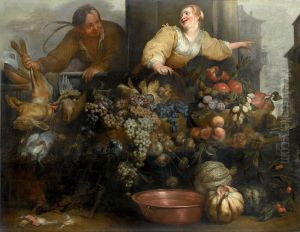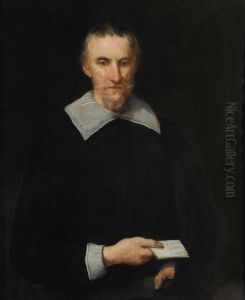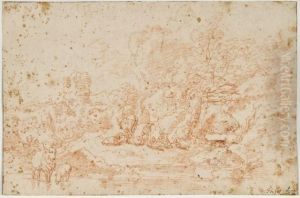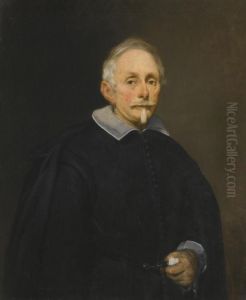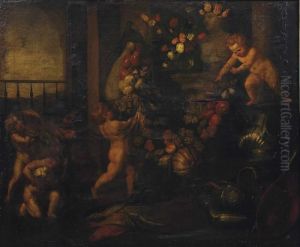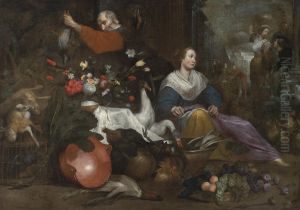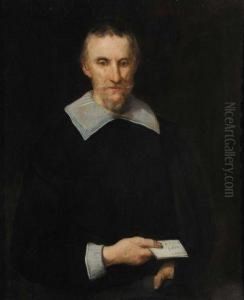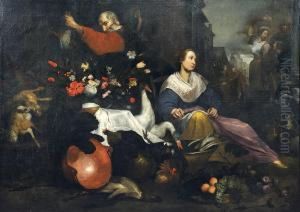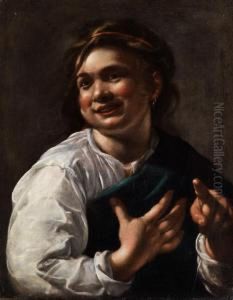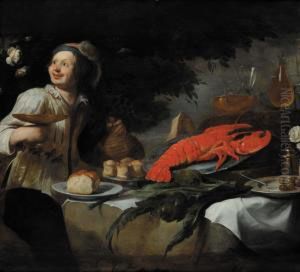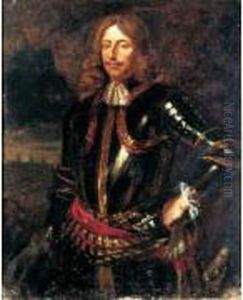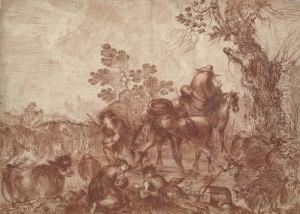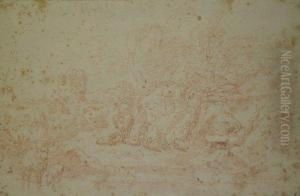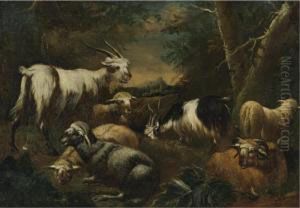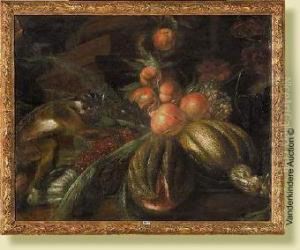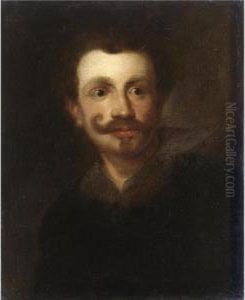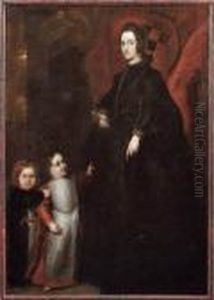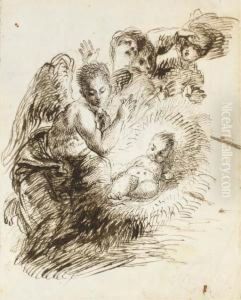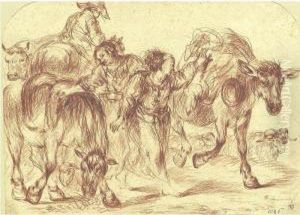Jan I Roos Paintings
Jan I Roos, also known as Giovanni Rosa or Johann Rous, was a Flemish painter known primarily for his work in the Baroque style and his significant contribution to the Italian art scene of his time. Born in Antwerp in 1591, he became part of the long tradition of Flemish artists who made their careers in Italy.
Roos was a student of the prominent animal painter Frans Snyders, which influenced his early work. However, Roos did not remain in his native Flanders. Like many artists of his era seeking greater opportunities, he moved to Genoa, Italy, where he spent most of his career. His move to Italy was pivotal in his development as an artist. There, he absorbed the Italian tradition and melded it with his Flemish roots, creating a distinctive style.
In Genoa, Jan Roos became known for his realistic depictions of animals, still-life, and genre scenes, often imbued with a sense of drama and rich color that was typical of Baroque art. He was particularly adept at capturing the texture of animal fur and the various materials present in his compositions. His work was well received, and he enjoyed the patronage of many notable Italian families, including the Doria and the Pallavicini.
Roos's success in Genoa also paved the way for his brothers, who were also artists, to establish themselves in Italy. His influence extended to his family and several Italian painters, and he played a part in the dissemination of Flemish painting techniques in Italy. Despite his integration into the Italian art world, Roos maintained connections with Flanders throughout his life, which is evident in the stylistic elements of his work.
Jan I Roos died in Genoa in 1638, leaving behind a legacy that reflected a successful fusion of Flemish artistic tradition with Italian Baroque sensibilities. His works can be found in various art collections and museums, testament to the enduring appeal of his artistic contributions.
